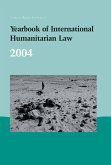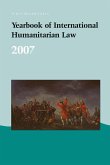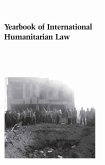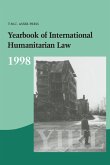Current peace operations often include an element of enforcement. Such ope- tions are based upon Chapter VII of the United Nations Charter and are regularly endowed with a right to use 'all necessary measures' to fulfil the tasks set down in the particular mandate from the UN Security Council. Such operations, moreover, are often deployed in unstable conditions that border on armed conflict, or in areas of existing conflict. At times, the military forces involved in these operations are also involved in the armed conflict itself. The utilization of military force naturally raises the question of the legal status of personnel in peace operations under international humanitarian law (IHL). They represent the international community and as such are protected personnel. But how should they be treated from the perspective of IHL? Should they, despite their obvious military characteristics, be regarded as civilians? At what point, if any, could they be regarded as combatants? On the issue of change of status under IHL, does the same threshold apply for the operation's military forces as for other mi- tary personnel? Does the involvement of peace forces in an armed conflict, made up of contributions from a number of States, automatically cause that conflict to assume an international nature? Are the Convention on the Safety of United Na- 3 tions and Associated Personnel and IHL, applicable in non-international armed conflicts, mutually exclusive? These dilemmas are well illustrated by the difficul- 4 ties facing the International Security and Assistance Force (ISAF) in Afghanistan.
The world's only annual publication devoted to the study of the laws of armed conflict, the Yearbook of International Humanitarian Law provides a truly international forum for high-quality, peer-reviewed academic articles focusing on this highly topical branch of international law. The Yearbook also includes a selection of documents from the reporting period, many of which are not accessible elsewhere, and a comprehensive bibliography of all recent publications in humanitarian law and other relevant fields. Ease of use of the Yearbook is guaranteed by the inclusion of a detailed index.
Distinguished by its topicality and contemporary relevance, the Yearbook of International Humanitarian Law bridges the gap between theory and practice and serves as a useful reference tool for scholars, practitioners, military personnel, civil servants, diplomats, human rights workers and students.
The world's only annual publication devoted to the study of the laws of armed conflict, the Yearbook of International Humanitarian Law provides a truly international forum for high-quality, peer-reviewed academic articles focusing on this highly topical branch of international law. The Yearbook also includes a selection of documents from the reporting period, many of which are not accessible elsewhere, and a comprehensive bibliography of all recent publications in humanitarian law and other relevant fields. Ease of use of the Yearbook is guaranteed by the inclusion of a detailed index.
Distinguished by its topicality and contemporary relevance, the Yearbook of International Humanitarian Law bridges the gap between theory and practice and serves as a useful reference tool for scholars, practitioners, military personnel, civil servants, diplomats, human rights workers and students.








